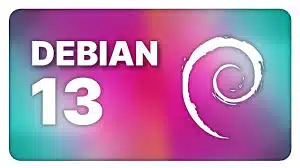- What’s New in Debian 13?
- Updated Software Packages
- Improved Installer Experience
- Enhanced Security Features
- Kernel Improvements
- Preparing for Migration
- Back Up Your Data
- Check System Compatibility
- Review Release Notes
- Migration Steps
- 1. Update Your Current System
- 2. Adjust Your Sources List
- 3. Perform the Distribution Upgrade
- 4. Clean Up
- Troubleshooting Common Issues
- Package Conflicts
- System Boot Issues
- Conclusion

Upgrading to a new operating system version can be both exciting and daunting. Debian 13 arrives with a host of enhancements and features aimed at improving user experience and performance. This article explores what’s new in Debian 13 and offers practical advice for migrating smoothly to this latest version.
What’s New in Debian 13?
Debian 13 introduces several compelling updates that cater to various user needs, from desktop users to server administrators.
Updated Software Packages
One of the major highlights of this release is the inclusion of the latest software packages. Users will find updated repositories containing newer versions of applications, libraries, and development tools. This means improved performance, enhanced security features, and better compatibility with contemporary hardware.
Improved Installer Experience
The Debian installation process has received notable refinements. The Debian 13 installer features an intuitive interface, making the installation process straightforward, even for those who are new to Debian. New installation options streamline the setup of environments, whether it’s for home or server use.
Enhanced Security Features
Security is always a priority with Debian, and version 13 continues this trend. The new release includes enhanced security tools and updated encryption methods. Users will benefit from a set of robust defaults that help safeguard their systems right out of the box.
Kernel Improvements
Debian 13 ships with an updated Linux kernel, improving system hardware compatibility and overall performance. With better support for newer devices, users can look forward to a smoother, more responsive experience.
Preparing for Migration
Switching to a new version can often cause disruptions if not approached correctly. Here are essential steps to facilitate a seamless transition to Debian 13.
Back Up Your Data
Before initiating any upgrade, a comprehensive backup is vital. Use robust backup solutions, such as rsync or graphical tools like Deja Dup, to secure all important files and system settings. This step will provide peace of mind and ensure that your data is safe in case of any issues during the upgrade.
Check System Compatibility
Make sure your hardware meets the requirements for Debian 13. Visit the official Debian website to check the system scalability and compatibility for your specific setup.
Review Release Notes
Thoroughly read information provided in the Debian 13 release notes. They offer crucial details about deprecated features, known issues, and specific changes that could impact your software or workflows.
Migration Steps
Once you have prepared adequately, it’s time to proceed with the upgrade. Here’s a step-by-step guide to make the process smoother:
1. Update Your Current System
Start by updating your existing Debian version to the latest available packages. Run the commands:
sudo apt update
sudo apt upgrade
sudo apt full-upgrade
2. Adjust Your Sources List
Next, you will need to modify your sources.list file to point to the Debian 13 repositories. Open the file with your text editor:
sudo nano /etc/apt/sources.list
Replace occurrences of your current version’s name (e.g., bullseye) with “bookworm” to point to the new release.
3. Perform the Distribution Upgrade
With your sources updated, it’s time to upgrade the system:
sudo apt update
sudo apt upgrade
sudo apt full-upgrade
This will ensure that all packages are updated according to the new version.
4. Clean Up
After the successful migration, remove any obsolete packages to free up disk space:
sudo apt autoremove
sudo apt clean
Troubleshooting Common Issues
During the migration, you may encounter some challenges. Here are common issues and ways to resolve them:
Package Conflicts
Conflicting packages can disrupt the upgrade process. Use apt tools to identify and remove problematic applications. The command
sudo apt install -f
can help resolve missing dependencies.
System Boot Issues
If you run into boot issues post-upgrade, using a live USB to access your system can help. From there, you can run diagnostic checks or revert back if necessary.
Conclusion
Debian 13 is a significant evolution in the Debian line, offering improvements that enhance user experience while maintaining the stability and security the distribution is known for. By following the steps outlined above, users can transition smoothly to this latest version, allowing them to take full advantage of its new features and enhancements. Whether you’re a developer, system administrator, or casual user, Debian 13 has something to offer everyone, making it an excellent choice for your operating system needs.